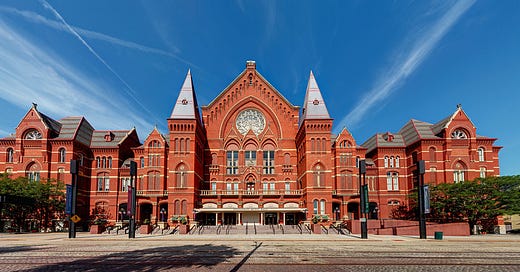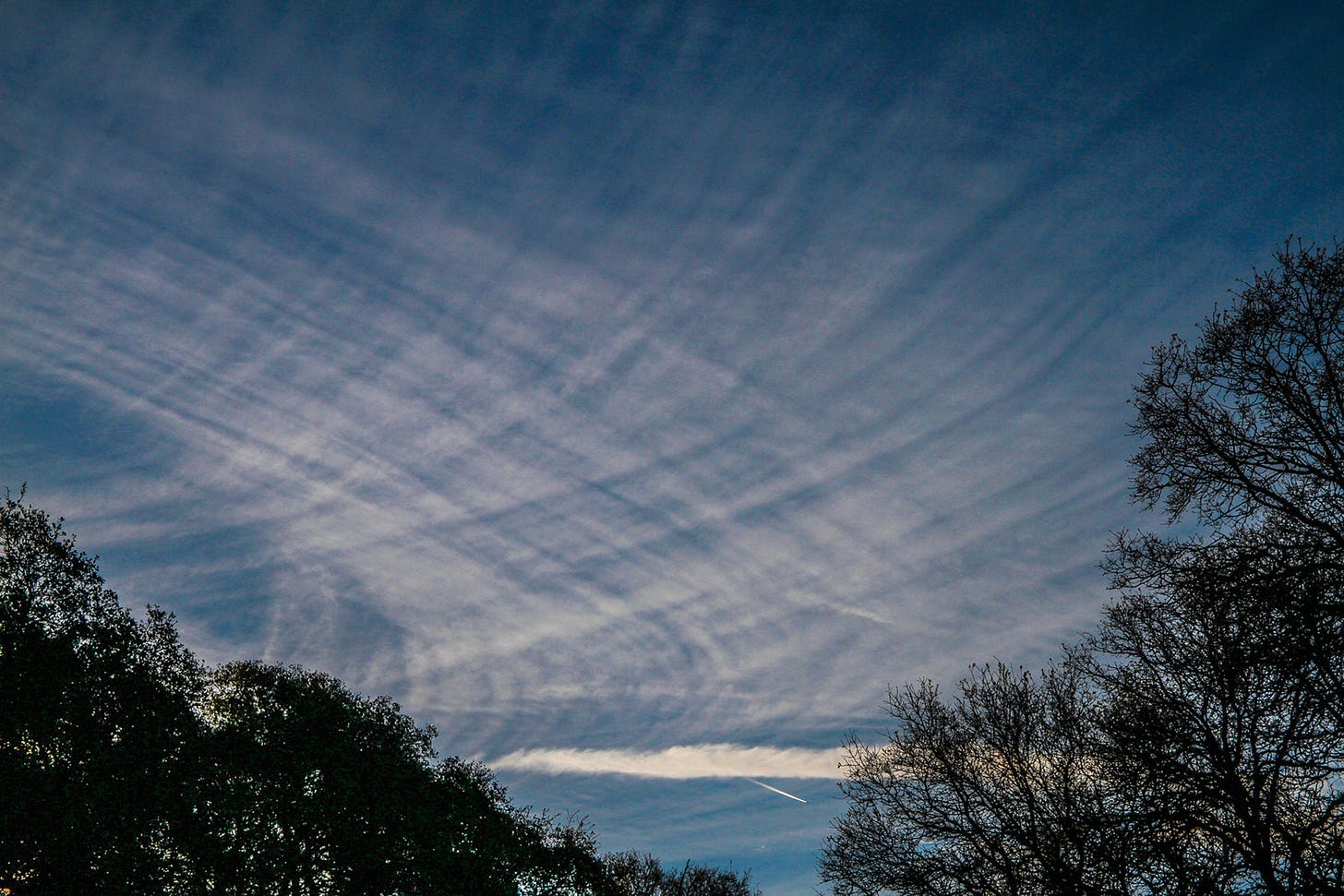Clouding Our Future: The Hidden Dangers of Manufactured Skies
The Nuremberg Code warns against experiments without informed consent. Yet, every man, woman, and child is now subject to an untested atmospheric experiment. Still we aren't supposed to ask questions!
One could start with the morning, the blank canvas of a clear, cerulean sky, the kind of blue that compels poets to squander adjectives and painters to scorn their palettes. It is a quiet promise, this sky, a daily assurance that there exists a realm above us untouched by human machinations—except, of course, for the mechanical pigeons slicing through it, the aircraft whose trails once faded as quickly as dreams upon waking. But no longer. Look up. The streaks linger now, sinister and tensile, stretching and unfurling, metastasizing into gauzy clouds too fragile to rain, too tenacious to dissipate. They are artificial, unmistakably so, and yet the world below carries on as though nothing strange has happened. Why?
Geoengineering, they call it. A term so clinical, so archly innocuous, it practically dares you to question it. This is no weather manipulation in the benign sense of cloud-seeding, where rain is coaxed from reluctant nimbostratus to quench a drought-stricken field. No, this is the deliberate manufacturing of clouds, a planetary-scale experiment conducted with neither oversight nor consent. The professed aim? To combat climate change by reflecting sunlight back into space, cooling the Earth as though it were a runaway CPU in need of a thermal reset. And who are the architects of this scheme? Shadowy organizations, nameless conglomerates, a billionaire or two whose public declarations veer between the philanthropic and the Orwellian. Bill Gates, that latter-day Prospero of tech and vaccine fame, has been among the more vocal proponents, but the real players remain cloaked in the same opaque haze they spray across our skies.
Have you noticed it? Truly noticed it? The transformation is subtle at first, almost imperceptible. The streaks begin as nothing more than airplane contrails, innocuous enough to the casual observer. But where a normal contrail dissipates within minutes, these spectral lines remain, spreading slowly, almost as though they were alive, tendrils groping outward until they coalesce into a smeared parody of natural clouds. By noon, the sky, which began so brilliantly, has dimmed into a dull, pearly monotony. The light is diffuse, alien, a counterfeit of sunlight’s golden clarity. There is an unease in this light, a sterility, as though we are living beneath a fluorescent dome in a laboratory experiment.
And perhaps we are.
The state of Tennessee, to its credit, has raised the alarm, effectively banning geoengineering in their skies, and another seven states have introduced similar legislation this year. (And of course, legacy media site like The New York Times boldly dismiss this concern as a ridiculous “conspiracy theory,” asking grown adults not to believe their eyes!) But bans in a few states amount to little when the project’s scope is global, its executors answerable to no one. Who controls the airspace above our heads? Not the people, certainly, and increasingly not the governments supposedly tasked with representing them. It is as though the heavens have been privatized, turned into a playground for technocrats whose vision of the future includes no consultation with those who will inherit it.
The implications are staggering. What chemicals, exactly, are in these artificial clouds? Aluminum, barium, strontium—names that crop up in conspiracy circles, yes, but also in scientific discussions of geoengineering materials. What are the long-term effects on soil, on water, on human health? No one knows. Or worse, someone knows and isn’t telling. Are these experiments conducted with the informed consent of the billions of people they affect? Clearly not. This is, at best, a colossal act of hubris and, at worst, an egregious violation of basic human rights. The Nuremberg Code, drafted in the wake of atrocities justified by the phrase “for the greater good,” explicitly prohibits experiments on human subjects without their voluntary consent. Yet here we are, unwitting participants in a grand climatological gamble.
And why has there been so little outcry? Why have the streaked skies failed to stir the public’s ire? Perhaps it is the ubiquity of the phenomenon, its slow and insidious creep into normalcy. The human mind, after all, is adept at rationalizing the familiar. What once would have been recognized as a strange aberration now elicits only a shrug, if that. Or perhaps it is the sheer audacity of the project, so massive and unthinkable that it slips past the mental defenses of those who would otherwise question it. The phrase “conspiracy theory” has been weaponized to discredit dissent, yet history is rife with examples of conspiracies that turned out to be true.
We must resist this apathy.
Action is required. Call your representatives. Demand transparency. Ask, point-blank: What are these streaks in the sky? Who authorized them? What chemicals are being dispersed, and what are their effects? Insist on hearings, on independent studies, on public disclosure. Geoengineering may be presented as a solution to climate change, but we must question the wisdom of those who would play god with the atmosphere. The stakes are nothing less than the integrity of our planet’s natural systems and the sovereignty of its people.
The sky, once the ultimate symbol of freedom, is being stolen from us. Look up, and you will see it. But seeing is not enough. We must act. Before the gossamer clouds of their making become the shroud of ours.
Michael S. Rose is author of the New York Times bestseller Goodbye, Goodmen (Regnery), Ugly As Sin (Sophia Institute), The Art of Being Human (Angelico), Benedict XVI: The Man Who Was Ratzinger (Spence), and other books.







